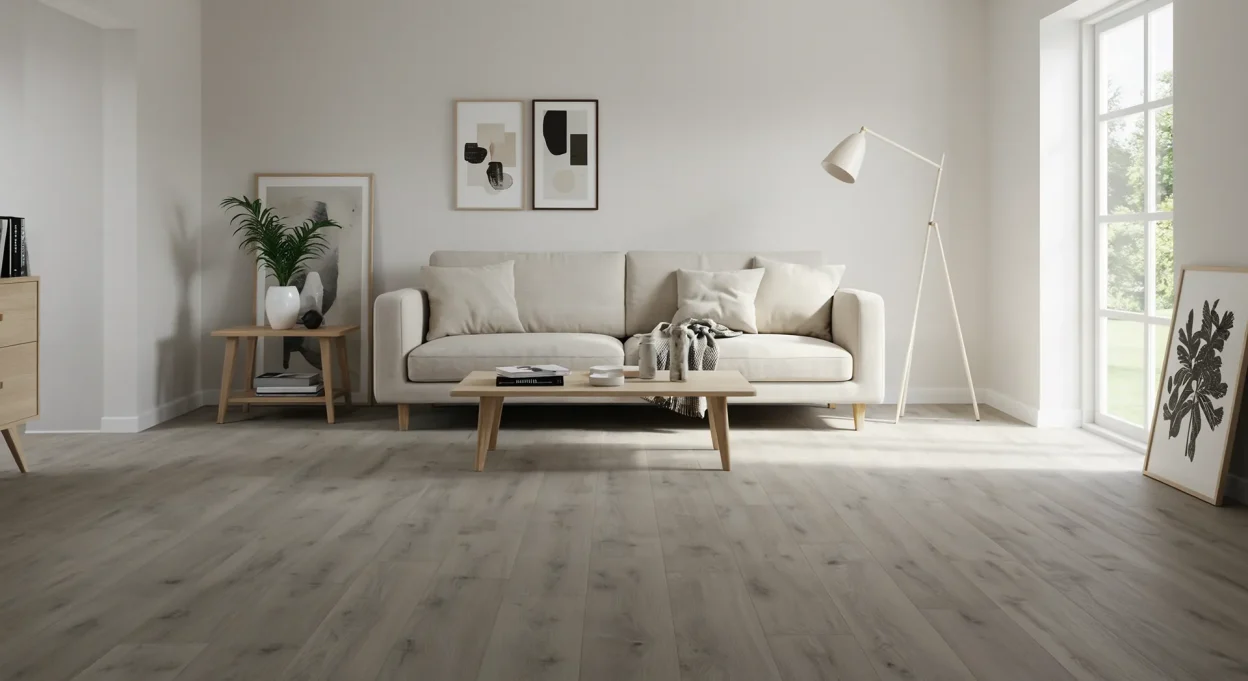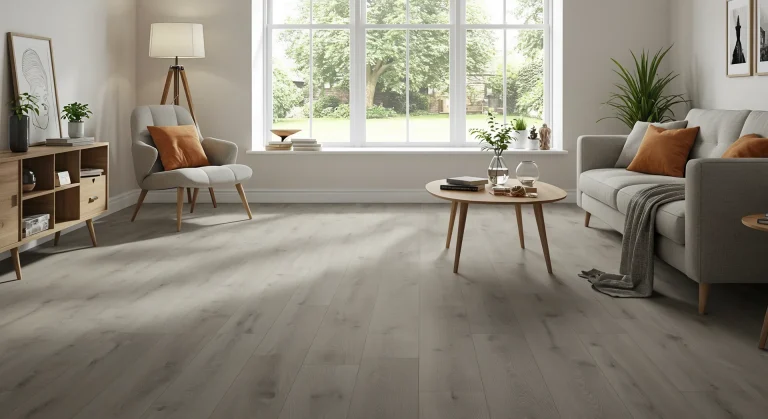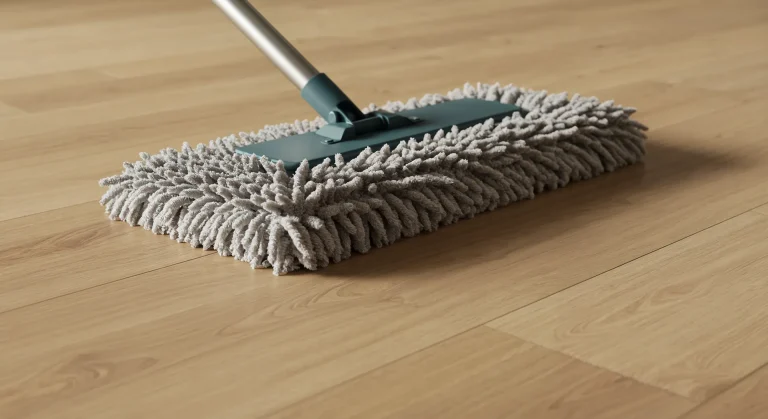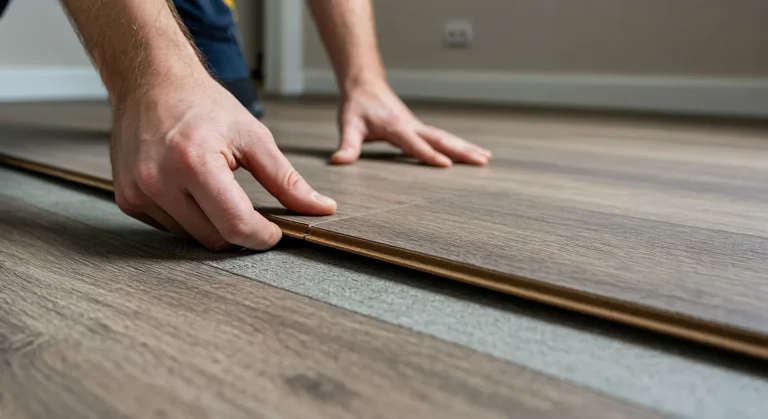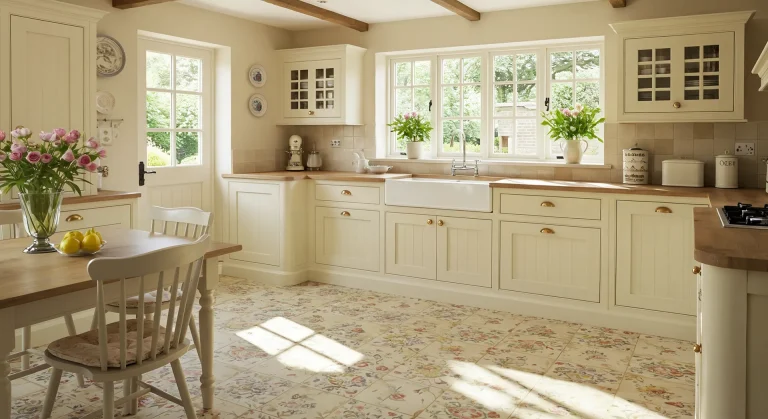The world of vinyl flooring has evolved dramatically, and at the forefront of this innovation is SPC flooring. If you’re exploring resilient, stylish, and highly practical flooring options for your UK home in 2025, you’ve likely encountered this term. Standing for Stone Plastic Composite (or Stone Polymer Composite), SPC flooring represents a significant advancement in luxury vinyl technology, offering unparalleled durability, stability, and waterproof performance.
But what is SPC flooring exactly? How does its unique construction deliver such robust benefits, and how does it stack up against other popular choices like WPC vinyl, traditional LVT, or even laminate? This ultimate UK guide will deconstruct SPC flooring, highlight its game-changing advantages for modern living, compare it to alternatives, showcase design possibilities, and cover essential considerations from installation to maintenance and cost.
Jump to Section:
- Unveiling SPC Flooring: The Next Generation of Resilient Floors
- The Science Behind the Strength: Deconstructing SPC Flooring Layers
- The SPC Advantage: Why It’s a Top Choice for UK Homes
- SPC Flooring vs. The Rest: A UK Market Comparison (WPC, LVT, Laminate)
- Design Dimensions: Styles & Aesthetics with SPC Flooring
- Essential Checks: Before You Choose SPC Flooring for Your Project
- Installing SPC Flooring: Key Steps for a Flawless Finish
- Keeping it Perfect: Simple Care for Your SPC Flooring
- What to Budget: SPC Flooring Costs in the UK (2025)
- SPC Flooring: The Smart, Strong, & Stylish Solution for Modern Living?
Unveiling SPC Flooring: The Next Generation of Resilient Floors
SPC flooring is a type of rigid core Luxury Vinyl Flooring (LVF), often found in plank (LVP) or tile (LVT) formats. It has gained immense popularity in the UK due to its superior structural integrity and performance characteristics. The “rigid core” aspect is key – unlike older flexible vinyl or even some less dense WPC (Wood Plastic Composite) cores, SPC’s core is incredibly dense and unyielding, leading to many of its standout benefits. It’s engineered to withstand the demands of busy modern households and challenging environments.
The Science Behind the Strength: Deconstructing SPC Flooring Layers
Understanding what SPC flooring is starts with its multi-layered construction:
- UV Protective Coating & Wear Layer: The topmost layer is a clear, UV-cured polyurethane coating that provides initial protection against fading and minor scuffs. Beneath this lies the crucial wear layer, a transparent vinyl layer (typically 0.3mm, 0.55mm, or 0.7mm thick) that dictates the floor’s resistance to scratches, stains, and heavy wear. A thicker wear layer means greater durability. Many SPC products feature enhanced wear layers with ceramic bead or aluminium oxide particles for extra toughness.
- Decor/Print Layer: A high-definition photographic film that carries the design – this is what gives SPC its realistic wood grain, stone texture, or abstract pattern appearance. Advanced printing and embossing techniques create incredibly authentic visuals.
- SPC Core Layer (The Game-Changer): This is the heart of SPC flooring and what sets it apart. It’s an ultra-dense, rigid core made from a composite of natural limestone powder (calcium carbonate), polyvinyl chloride (PVC), and stabilisers. This composition results in a core that is:
– 100% Waterproof: Impervious to water and moisture.
– Extremely Stable: Minimal expansion and contraction with temperature or humidity changes.
– Highly Dent & Impact Resistant: The density resists dents from dropped objects or heavy furniture. - Attached Underlay (Often): Many SPC flooring products, especially click-lock varieties popular in the UK, come with a pre-attached underlay made from materials like IXPE foam or cork. This provides added comfort underfoot, sound reduction, and can simplify installation by eliminating the need for a separate underlay layer.
The SPC Advantage: Why It’s a Top Choice for UK Homes
The unique construction of SPC flooring delivers a powerful set of benefits for UK homeowners:
- Ultimate Durability & Impact Resistance: The high-density SPC core makes it exceptionally resistant to dents, chips, and impacts from dropped items or heavy furniture – far more so than traditional LVT, WPC, or laminate.
- 100% Waterproof: The core is completely impervious to water, making SPC flooring an ideal choice for any room, including UK kitchens, bathrooms, utility rooms, basements, and conservatories. Spills and splashes are no cause for concern.
- Exceptional Dimensional Stability: SPC expands and contracts minimally with temperature and humidity fluctuations. This makes it incredibly stable, suitable for large open-plan areas without numerous transition strips, rooms with direct sunlight (like conservatories), and generally more resilient in the UK’s variable climate conditions. Its stability is a boon for all types of properties, including coastal homes that might experience greater humidity shifts.
- Improved Subfloor Forgiveness (within limits): Due to its rigidity, SPC can often bridge minor subfloor imperfections (e.g., slight undulations, old tile grout lines) better than flexible LVT or thinner laminate. However, a reasonably level and smooth subfloor is still highly recommended for optimal performance and ease of installation.
- Realistic & Stylish Designs: Benefits from the same advanced printing and embossing technologies as other luxury vinyl, offering a vast array of highly authentic wood, stone, and abstract looks.
- DIY-Friendly Installation: Most SPC flooring uses a click-lock system, making it suitable for competent DIY installation.
- Underfloor Heating (UFH) Compatibility: Generally works very well with embedded UFH systems (always confirm manufacturer specifications).
- Easy Maintenance: Requires simple sweeping, vacuuming, and damp mopping.
SPC Flooring vs. The Rest: A UK Market Comparison (WPC, LVT, Laminate)
How does SPC flooring stack up against other popular UK choices?
SPC vs. WPC (Wood Plastic Composite) Flooring:
- Core: SPC is denser and more rigid (limestone-based). WPC (wood flour/pulp + PVC + foaming agents) is slightly less dense, often thicker, and feels a bit softer/warmer underfoot.
- Dent Resistance: SPC generally has higher dent resistance due to its denser core.
- Sound Insulation: WPC often offers slightly better inherent sound insulation due to its core structure.
- Both are typically 100% waterproof and use click systems.
SPC vs. Traditional LVT (Flexible Glue-Down):
- Rigidity & Installation: SPC is rigid and usually click-lock (floating). Traditional LVT is flexible and glue-down, conforming more to subfloor contours.
- Subfloor Forgiveness: SPC’s rigidity helps bridge minor imperfections. Flexible LVT demands a perfectly smooth subfloor.
- Feel: SPC feels more solid; flexible LVT can feel softer depending on subfloor.
SPC vs. Laminate Flooring:
- Waterproofness: SPC is 100% waterproof. Laminate’s HDF core is highly susceptible to moisture damage, even “water-resistant” types have limitations. This is SPC’s biggest advantage over laminate for UK kitchens and bathrooms.
- Core Durability: SPC’s dense core is more resistant to dents and impacts than laminate’s HDF core.
- Sound: Laminate can be noisier without a good quality underlay. SPC often has an attached underlay, contributing to quieter performance.
SPC vs. Engineered Wood:
- Material & Authenticity: SPC is synthetic. Engineered wood has a real wood top layer offering authentic wood feel and refinishing potential (limited).
- Waterproofness: SPC is fully waterproof. Engineered wood is not (though more stable than solid wood).
- Scratch & Dent Resistance: SPC’s wear layer and dense core often provide superior resistance to everyday scratches and dents compared to many wood species.
Design Dimensions: Styles & Aesthetics with SPC Flooring
SPC flooring doesn’t compromise on style:
- Wood Effects (LVP format): Dominant in the UK market. Expect realistic oaks (natural, limed, smoked, grey-washed – always popular), warm walnuts, rustic pines, and more. Wide planks and long planks are on-trend, creating an expansive feel. Herringbone SPC flooring is also a major trend, offering classic parquet style with modern performance. Look for “Registered Embossed” finishes where texture aligns with the printed grain.
- Stone & Tile Effects (LVT format): Large format SPC tiles mimicking marble, slate, travertine, concrete, or patterned encaustic designs are perfect for contemporary kitchens and bathrooms. Matt finishes are particularly fashionable.
- UK Brands & Availability: Many leading flooring brands available in the UK offer extensive SPC ranges, including Pro Tek Flooring (e.g. Editions Range), Karndean (e.g., Korlok range), Amtico (e.g., Click Smart ranges), Quick-Step (Alpha Vinyl), Moduleo (LayRed), COREtec, and various quality own-brand lines from major flooring retailers.
Essential Checks: Before You Choose SPC Flooring for Your Project
- Subfloor Condition: While SPC is more forgiving, your subfloor still needs to be clean, dry, and reasonably level (check manufacturer tolerance, e.g., typically no more than 3-5mm deviation over 2-3m). Significant dips or bumps should be addressed.
- Attached Underlay: Most SPC flooring includes a pre-attached underlay. If so, do not add another loose-lay underlay unless explicitly permitted by the manufacturer (very rare), as this can make the floor too soft and stress the click joints.
- Wear Layer Thickness: Choose based on expected traffic: 0.3mm for light domestic use (bedrooms), 0.55mm for heavy domestic use (hallways, living areas, kitchens), 0.7mm+ for light commercial.
- Overall Thickness: SPC planks/tiles usually range from 4mm to 8mm (including attached underlay). Thicker products can feel more substantial. Consider impact on door clearances and transitions to other floors.
- Quality & Brand: Research brands, read reviews, and check warranty terms.
- Acclimatisation: Follow manufacturer guidelines (typically 24-48 hours in the room).
Installing SPC Flooring: Key Steps for a Flawless Finish
(Always refer to your specific product’s installation manual)
- Subfloor Preparation: Ensure it’s clean, dry, and level. Lay a DPM on concrete ground floors if your SPC (or its attached underlay) doesn’t explicitly cover this.
- Acclimatise: As per manufacturer instructions.
- Underlay: Usually not needed if pre-attached. If not, use a thin, dense LVT-specific underlay if recommended.
- Plan Layout & Starting Wall: Decide plank direction. Plan to avoid very narrow strips at the finishing wall.
- Expansion Gaps: Leave a small expansion gap (typically 5-8mm, check instructions) around the entire perimeter and against fixed objects using spacers. SPC is stable, but some movement is still possible.
- Click-Lock Installation: Engage the planks according to the specific locking system (angle-drop, tap-lock etc.). Stagger end joints between rows significantly (e.g., by at least 30cm).
- Cutting SPC: Due to its dense core, cutting SPC can require a bit more effort than softer vinyls.
– Utility Knife (Score & Snap): Use a very sharp, heavy-duty blade. Score deeply multiple times. Snapping requires firm, even pressure. May be challenging on thicker SPC.
– Vinyl Plank Cutter (Guillotine): Good for clean, straight cross cuts.
– Jigsaw/Mitre Saw/Circular Saw: Use a fine-toothed blade suitable for plastics/laminates. Cut slowly. Often best to cut decor-side down with jigsaws/circular saws (unless using a down-cutting blade) to minimise chipping on the top surface. - Finishing: Remove spacers, install skirting/beading (fixed to wall), and threshold strips.
Keeping it Perfect: Simple Care for Your SPC Flooring
If you’re wondering how to clean luxury vinyl flooring, especially a durable type like SPC, the good news is it’s quite straightforward. To keep your SPC flooring looking perfect, follow these simple care guidelines:
- Regular Cleaning: Sweep or vacuum (soft brush head/hard floor setting) frequently to remove grit.
- Damp Mopping: Clean as needed with a well-wrung microfibre mop and a pH-neutral cleaner designed for vinyl floors. Avoid excessive water (even though SPC is waterproof, you don’t want water sitting under skirting for long).
- Spill Management: Wipe up spills promptly.
- Protection: Use felt pads under furniture legs. Use non-staining doormats.
- Avoid: Abrasive cleaners, scouring pads, harsh solvents, wax polishes (unless specifically for SPC maintenance), and usually steam mops (check manufacturer advice, as prolonged high heat at joints isn’t ideal).
What to Budget: SPC Flooring Costs in the UK (2025)
- Material Costs: For SPC flooring, expect to pay approximately £20 to £50+ per square metre in the UK. Budget options might be found around £20-£25/m², mid-range (good quality, 0.55mm wear layer, attached underlay) around £30-£40/m², and premium brands/designs £40-£50+/m².
- Installation Labour (if not DIY): Professional fitting for click SPC might be around £15 – £25 per m².
- Overall: SPC flooring often represents excellent value for money given its high performance, durability, and waterproof properties, typically costing less than engineered wood or high-end ceramic tiles, especially when factoring in easier DIY potential.
SPC Flooring: The Smart, Strong, & Stylish Solution for Modern Living?
So, what is SPC flooring in the context of today’s demanding UK households? It’s a technologically advanced, highly practical, and aesthetically versatile flooring solution. Its core strengths – being 100% waterproof, exceptionally durable against dents and impacts, and incredibly stable across temperature and humidity changes – make it an ideal choice for virtually any room in the home, from busy kitchens and bathrooms to conservatories and open-plan living spaces. Its suitability for use with underfloor heating further enhances its appeal for modern UK living.
For homeowners seeking a floor that combines the beauty of natural materials (through realistic wood and stone effect designs) with peace-of-mind performance and relatively easy installation, SPC flooring is a compelling front-runner. Its robust nature makes it a reliable and stylish investment that can withstand the tests of everyday life for many years to come.

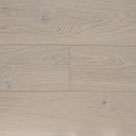 Light
Light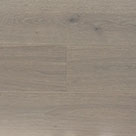 Grey
Grey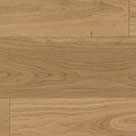 Natural
Natural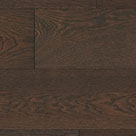 Dark
Dark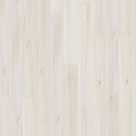 White
White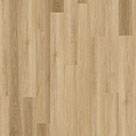 Light
Light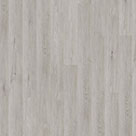 Grey
Grey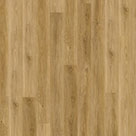 Natural
Natural Dark
Dark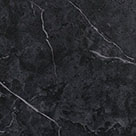 Black
Black